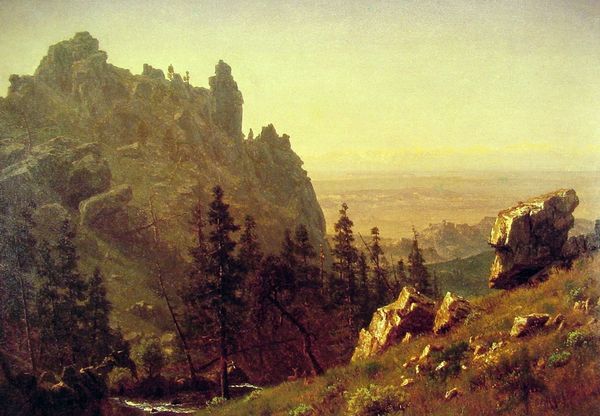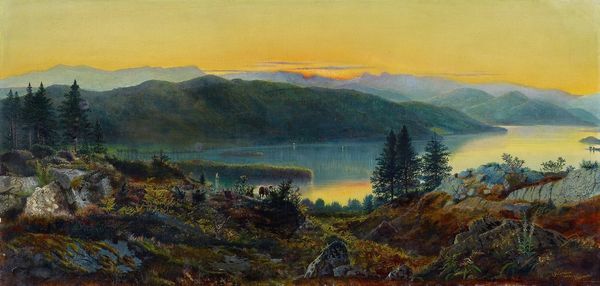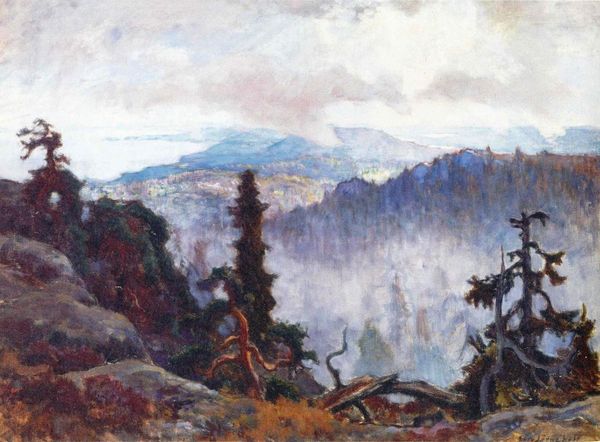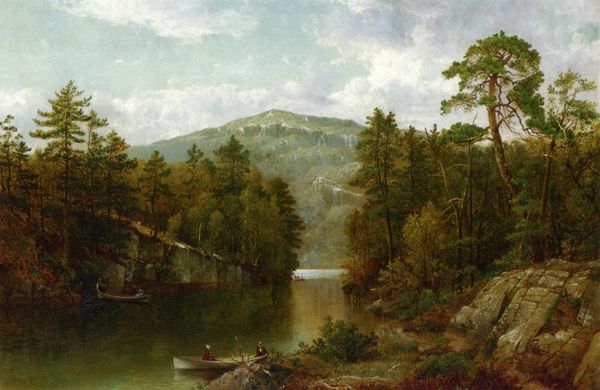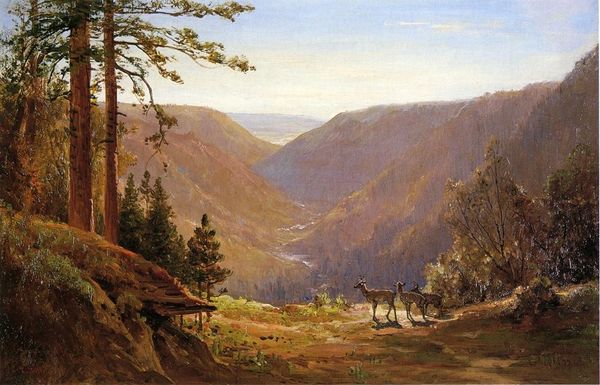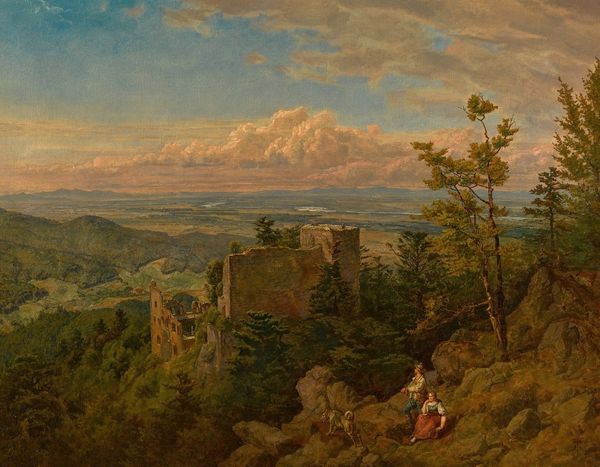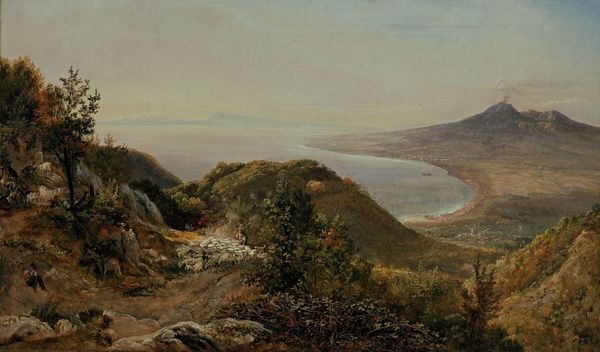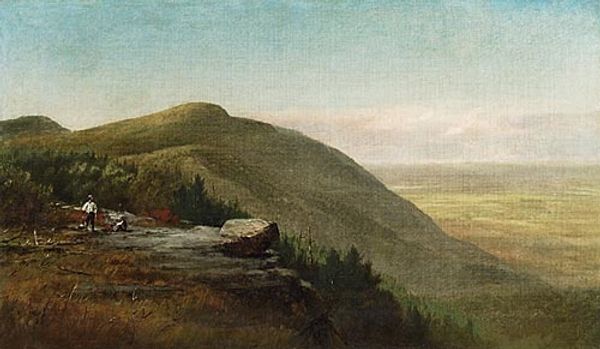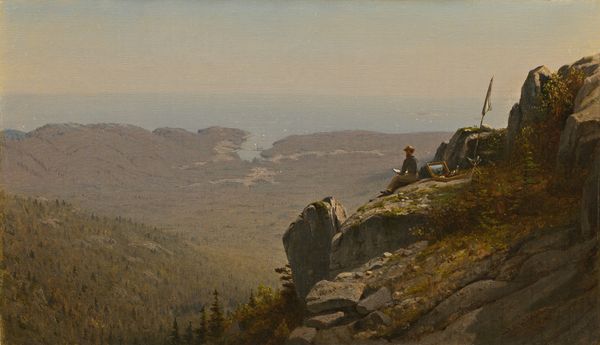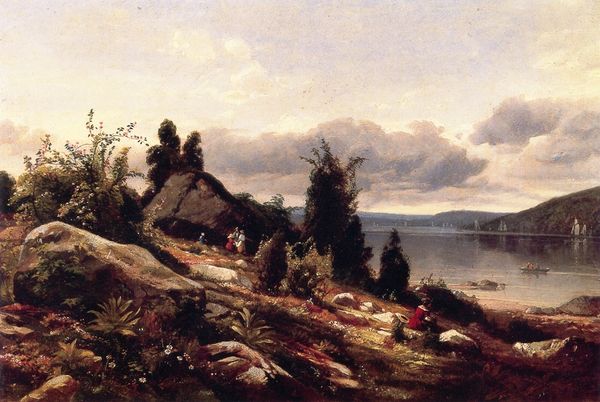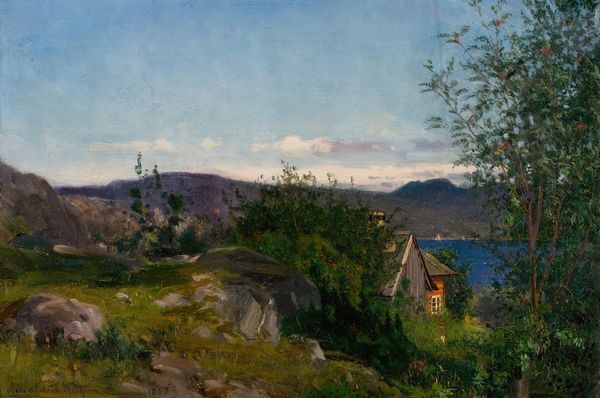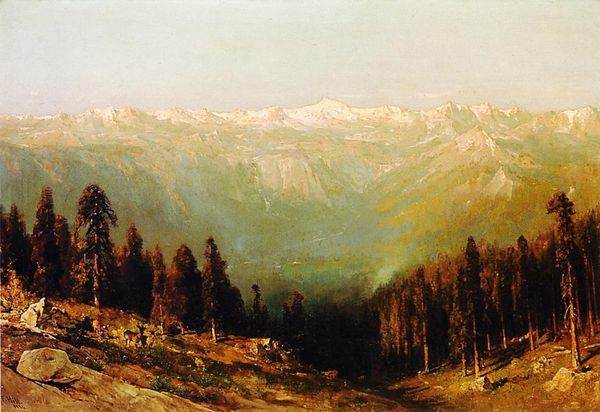
Copyright: Public domain
Thomas Hill made this view of the Hudson River Valley from the Catskill Mountain House using oil on canvas, in the mid-19th century. The very notion of 'landscape painting' might seem far removed from the world of labor and industry. But think about it. The pigments that Hill deployed so skillfully, ground and mixed into paint, were products of complex global supply chains. The canvas itself, woven from flax or cotton, depended on agricultural production, and the labor of enslaved people in the American south. And of course, the vista he depicts – seemingly untouched – was rapidly being transformed by the very economic energies that gave rise to the Hudson River School. Hill's painting invites us to contemplate the relationship between nature and culture, but also between artistic creation and the broader forces of industrialization, and hidden social costs, that defined his era. By considering these material and historical contexts, we can appreciate the painting's full complexity and its relevance to our own time.
Comments
No comments
Be the first to comment and join the conversation on the ultimate creative platform.
